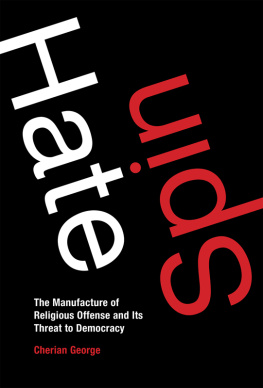U. S. DEPARTMENT OF AGRICULTURE.
FARMERS' BULLETIN No. 175.
Home Manufacture and Use of
Unfermented Grape Juice.
BY
GEORGE C. HUSMANN,
Expert in Charge of Viticultural Investigations,
Bureau of Plant Industry,
U. S. Department of Agriculture.
WASHINGTON:
GOVERNMENT PRINTING
1903.
LETTER OF TRANSMITTAL.
U. S. Department of Agriculture ,
Bureau of Plant Industry ,
Washington, D. C., May 28, 1903.
Sir : I have the honor to transmit herewith a paper on Home manufacture and use of unfermented grape juice, by Mr. George C. Husmann, expert in charge of viticultural investigations in this Bureau, and to recommend it for publication as a Farmers' Bulletin.
Part of the matter contained in this paper has already been published in Bulletin No. 24 of this Bureau on the Manufacture and Preservation of Unfermented Grape Must, but the widespread interest in the subject and the demand for information regarding appliances and methods of manufacture adapted to the ordinary farm and kitchen makes desirable its wider circulation through the Farmers' Bulletin series.
Respectfully,
B. T. Galloway,
Chief of Bureau.
Hon. James Wilson , Secretary.
CONTENTS.
| Page. |
| Introduction |
| Historical notes |
| Composition of the grape |
| Causes of fermentation |
| Methods of preventing fermentation |
| Home manufacture |
| Manufacture of larger quantities |
| Useful appliances |
| Composition of unfermented grape juice |
| Flavor and quality in grape juice |
| Uses of unfermented grape juice |
| Food value of unfermented grape juice |
| A few good recipes |
ILLUSTRATIONS.
| Page. |
| Fig. | 1. | Cloth hand press |
| 2. | Cloth or felt filter |
| 3. | Pasteurizer for juice in bottles |
| 4. | Drip bag |
| 5. | Barrel and skid |
| 6. | Sulphur hook |
| 7. | Corking machine |
| 8. | Home-made lever press |
B. P. I.62.
Pom. I.18.
HOME MANUFACTURE AND USE OF UNFERMENTED GRAPE JUICE.
INTRODUCTION.
Unfermented grape juice has no doubt been used ever since wine has been made from the grape. The following practical suggestions will enable housewives to put up unfermented juice at the time of the fruit harvest, and thus to utilize much fruit that is now annually lost through inability to preserve it in the fresh state. In this form it is a pleasant, wholesome drink and food well adapted to home use. On some farms enough such preventable wastes occur almost every year to largely reduce the possible profits, or even to cause failure to meet the running expenses of the farm. By preventing these wastes an unprofitable farm may often be made profitable.
HISTORICAL NOTES.
Galenius, the Greek physician and writer says (A. D. 131): "A good many Asiatic wines were stored in bottles which were hung in the corner of fireplaces, where, by evaporation, they became dry." This process was called "fumarium."
The Greeks had two kinds of wine, "protoplon," or first juice of the grape before pressing, and "denterion," or pressed juice. The Romans called them "vinum primarium" and "vinum secondarium." Some of them drank the juice before fermentation had started, and called it "mustum." After the must or juice had been through a heating process (called "reduction" nowadays), they called it "frutum," and when, after long heating, it had been reduced to one-half or one-third its original volume, they called it "sapa." This was used by the Romans on their bread and was equivalent to what we now call grape syrup.
In Europe physicians often send their patients to the wine-growing districts during vintage time to take daily rations of the fresh juice as it comes from the crusher. This, however, restricts its use to a brief season of the year and to the immediate vicinity of the vineyards, or to individuals who are yet strong enough to undertake the journey.
Of late years repeated efforts have been made to prevent the juice from fermenting and to preserve it in vessels of such size and shape as can be easily transported, thus rendering its use possible at all times of the year. Until recently its use has been almost exclusively restricted to juice for medicinal or sacramental purposes. Unrestricted and general use has been retarded through lack of knowledge of the principles underlying the process of manufacture. This lack of knowledge and of the necessary skill in applying it has resulted in many failures, thus rendering the production of a good article uncertain and expensive.
COMPOSITION OF THE GRAPE.
The grape contains 12 to 28 per cent of sugar, about 2 to 3 per cent of nitrogenous substances, and some tartaric and malic acids. The skins contain tannin, cream of tartar, and coloring matter. The seeds contain tannin, starchy matters, and fat. The stems contain tannin, diverse acids, and mucilaginous matter. The value of the juice made from any grape is determined by the relative proportion and composition of these various parts.
CAUSES OF FERMENTATION.
It is well known that grapes and other fruits when ripe have the invisible spores of various fungi, yeasts (ferments), and bacteria adhering to their skins and stems. When dry these spores are inert, but after the grapes are crushed and the spores are immersed in the juice they become active and begin to multiply. If the juice is warm, the changes take place rapidly; if, on the other hand, it is cool, the change is slower. But in either case, if left alone, the organisms increase until the juice ferments. The most favorable temperature for fermentation is between 65 F. and 88 F. Cold checks, but does not kill, the ferment. This fermentation, now commonly called the elliptic yeast, changes the sugar in the grape to alcohol and carbonic-acid gas, and is the leading factor in converting must into wine. Hence it will be readily seen that to keep grape juice sweet fermentation must be prevented, and to be salable the product must be clear, bright, and attractive.
The word "must" as used in wine making invariably refers to the unfermented juice of the grape and is so used in this publication.
METHODS OF PREVENTING FERMENTATION.
Fermentation may be prevented in either of two ways:
(1) By chemical methods, which consist in the addition of germ poisons or antiseptics, which either kill the germs or prevent their growth. Of these the principal ones used are salicylic, sulphurous, boracic, and benzoic acids, formalin, fluorides, and saccharin. As these substances are generally regarded as adulterants and injurious, their use is not recommended.
(2) Mechanical means are sometimes employed. The germs are either removed by some mechanical means, such as filtering or a centrifugal apparatus, or they are destroyed by heat, electricity, etc. Of these, heat has so far been found the most practical.
When a liquid is heated to a sufficiently high temperature all organisms in it are killed. The degree of heat required, however, differs not only with the particular kind of organism, but also with the liquid in which they are held. Time is also a factor. An organism may not be killed if heated to a high temperature and quickly cooled. If, however, the temperature is kept at the same high degree for some time, it will be killed. It must also be borne in mind that fungi, including yeasts, exist in the growing and the resting states, the latter being much more resistant than the former. A characteristic of the fungi and their spores is their great resistance to heat when dry. In this state they can be heated to 212 F. without being killed. The spores of the common mold are even more resistant. This should be well considered in sterilizing bottles and corks, which should be steamed to 240 F. for at least fifteen minutes.






